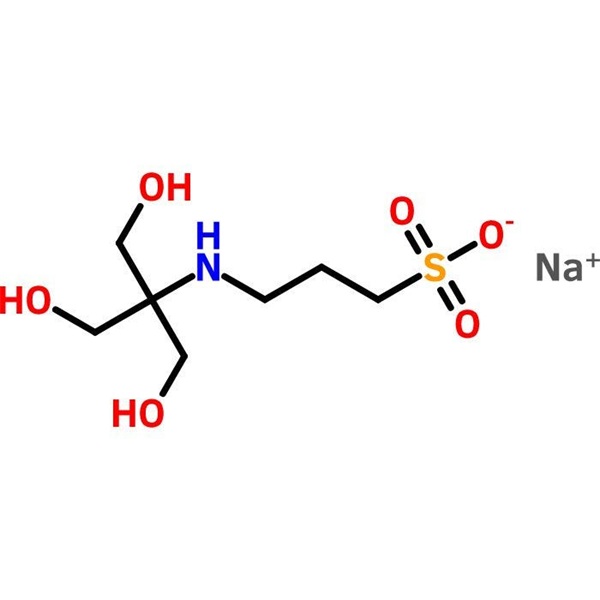Chemical Properties:
Package: Bottle, Aluminium foil bag, 25kg/Cardboard Drum, or according to customer's requirement. Storage Condition: Store in sealed containers at cool and dry place; Protect from light and moisture.Shanghai Ruifu Chemical Co., Ltd. is the leading manufacturer and supplier of TAPS Sodium Salt (CAS: 91000-53-2) with high quality, commercial production. Welcome to order.| Item | Specifications |
| Appearance | White Powder |
| Purity / Analysis Method | >99.0% (Titration) |
| Useful pH Range | 7.7~9.1 |
| pKa (at 25℃) | 8.4 |
| Water (by Karl Fischer) | <1.00% |
| Solubility (25% in H2O) | Clear to Slightly Hazy |
| Absorbance (A280) | <0.02 |
| Absorbance (A260) | <0.04 |
| DNase, RNase, Protease | None Detected |
| Test Standard | Enterprise Standard |
| Usage | Biological Buffer |
Description:
Specifications:
Package & Storage:
| Chemical Name | TAPS Sodium Salt |
| Synonyms | TAPS-Na; N-[Tris(hydroxymethyl)methyl]-3-Aminopropanesulfonic Acid Sodium Salt; Sodium 3-((1,3-Dihydroxy-2-(Hydroxymethyl)propan-2-yl)amino)propane-1-Sulfonate |
| CAS Number | 91000-53-2 |
| CAT Number | RF-PI1673 |
| Stock Status | In Stock |
| Molecular Formula | C7H16NNaO6S |
| Molecular Weight | 265.26 |
| Brand | Ruifu Chemical |
Advantages:
FAQ:
Application:
TAPS Sodium Salt (CAS: 91000-53-2) is a zwitterionic biological buffer often used as a buffering agent in biological and biochemical research. TAPS, is used in biochemistry and molecular biology. TAPS has been utilized in capillary electrophoresis of such materials as DNA and DNA-dye complexes. Dyes have been separated by planar chromatography with electro osmotic flow with 1 mM TAPS in the mobile phase. The stability constants of metal ions with TAPS have been investigated by capillary electrophoresis. TAPS has also been shown to inhibit connexin channel activity. The activity of various mutants of carbonic anhydrase I and carbonic anhydrase II has been studied in a variety of buffers, including TAPS.


